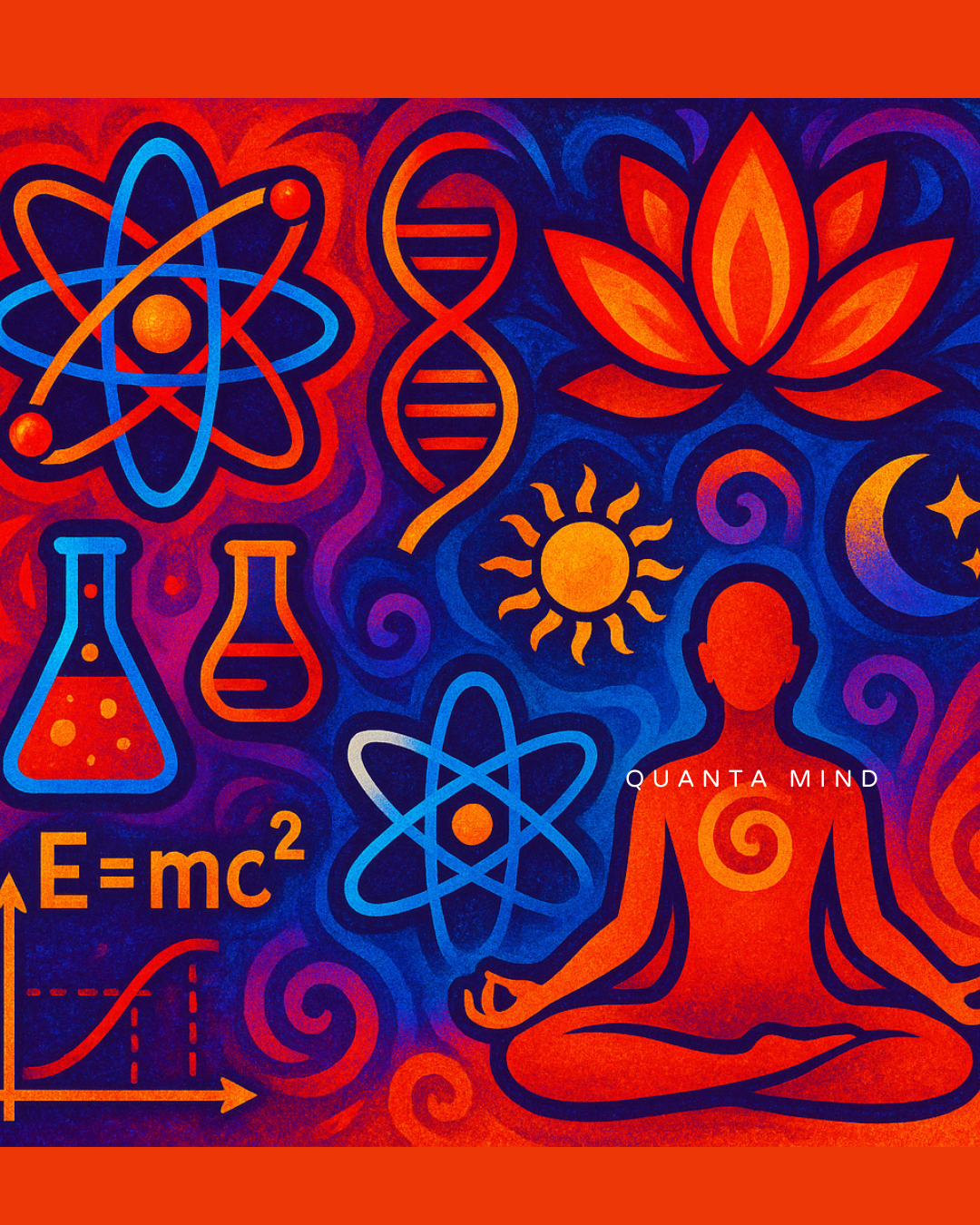ThetaHealing has been called everything from a ‘life-changing breakthrough’ to ‘pure pseudoscience.’ But what does science actually say?
In the world of alternative healing, ThetaHealing often finds itself praised by practitioners and questioned by skeptics. One of the most common criticisms often repeated in AI-generated online summaries and articles is that “ThetaHealing is pseudoscience.” But is that a fair assessment? To answer this, we must step beyond surface-level judgments and explore what the practice actually involves and how it aligns with modern discoveries in neuroscience, quantum biology, and the science of belief. Only then can we separate misconception from measurable impact.
What is Pseudoscience?
Pseudoscience, refers to any system that tries to explain physical phenomena but cannot be proved by the scientific method.
What Is ThetaHealing?
ThetaHealing is a meditative technique-spiritual in nature, that aims to identify and shift limiting subconscious beliefs, emotional patterns, and even physical conditions through a state of deep awareness known as the theta brainwave. Practitioners enter this state to facilitate intuitive insight and energetic healing, often by observing change at a quantum or energetic level.
To critics, this sounds unscientific. But when we dissect its core mechanisms, we find surprisingly strong parallels with established scientific principles.
Acknowledging the Lack of Direct Studies
While ThetaHealing lacks large-scale clinical trials specifically testing its methodology, its core mechanisms such as theta-state meditation and belief reprogramming are supported by adjacent research in neuroscience and epigenetics. This distinction is important: though the practice itself hasn’t been rigorously validated, its foundational principles align with emerging science with more evidence coming up to validate its effectiveness.

The Science of Theta Brainwaves
One of ThetaHealing’s foundational aspect is that healing takes place in a theta brainwave state (4–8 Hz) a deeply relaxed, trance-like condition between wakefulness and sleep. Theta states are well-documented in neuroscience and are known to:
- Increase access to the subconscious mind
- Enhance neuroplasticity (the brain’s ability to change)
- Heighten suggestibility and emotional learning
- Activate the body’s healing mechanisms
Dr. Joe Dispenza, who has conducted extensive EEG research on advanced meditators (his research is on-going), shows that individuals who sustain theta and gamma brainwave patterns can experience significant changes in their autonomic nervous system, hormone levels, immune responses, and even epigenetic expression. Dr. Dispenza’s research on meditation and its effect, has often indicated that when we are in the theta state, we are more open to receiving information, reprogramming our subconscious mind, and initiating healing processes.
The Biology of Belief
Another core principle of ThetaHealing is the idea that changing our beliefs can change our biology. Critics often view this as spiritual speculation but science tells a similar story. Dr. Bruce Lipton, a pioneering cell biologist, demonstrated through his research in epigenetics that gene expression is not fixed. Rather, it is heavily influenced by the environment and our perception of that environment.
“Genes are not destiny. Beliefs control biology,” Lipton states in The Biology of Belief.
This supports the foundational process of ThetaHealing: identifying disempowering beliefs and replacing them with new ones that support emotional, mental, and physical well-being.
For transparency, it is important to note that while studies on neuroplasticity (e.g., Dispenza’s work) and epigenetics (e.g., Lipton’s research) don’t explicitly test ThetaHealing, they demonstrate that the brain and body can change through focused states of consciousness and belief shifts are key pillars of the ThetaHealing practice. This indirect evidence invites curiosity rather than serving as definitive proof.
The Observer Effect and Quantum Healing
ThetaHealing also involves a technique called “witnessing” a focused intention to observe healing taking place. This may sound mystical, but it reflects a well-documented phenomenon in quantum physics: the observer effect.
In basic terms, particles behave differently when observed. The simple act of observation alters their outcome. Similarly, neuroscientific studies show that visualization, mental rehearsal, and intention activate the same neural pathways as actual experience.
Dr. Dispenza’s research supports this: patients who mentally rehearsed movement or healing responses showed measurable brain and body changes, without any physical action. In ThetaHealing®, witnessing becomes a powerful tool for transformation as the practitioner enters a deep theta meditative state and observes the healing or shift taking place. This act of conscious observation is central to the technique, reinforcing the belief that transformation occurs the moment it is fully seen and acknowledged.
The Limits of the “Pseudoscience” Label
Skeptics argue that ThetaHealing lack direct scientific validation and they’re right, to a degree. No large-scale, peer-reviewed studies exclusively on ThetaHealing exist yet. However, the science underlying its methods theta brainwave states, neuroplasticity, and epigenetic change is well-documented. This distinction matters: while ThetaHealing awaits rigorous testing, its framework operates within boundaries science already acknowledges. It’s easy to label anything unfamiliar as pseudoscience. Mindfulness meditation, acupuncture, and hypnosis were once dismissed by skeptics. Today, they’re studied in Institutions and used in hospitals worldwide.
ThetaHealing may not yet have the volume of double-blind studies that conventional medicine demands, but it is not without scientific merit. It sits at the intersection of emerging science and spiritual awareness, making it difficult to categorize within conventional scientific paradigms yet.
Conclusion
Is ThetaHealing pseudoscience? If you’re only measuring it by old paradigms, perhaps. But if you’re willing to look through the lens of quantum biology, neuroscience, and epigenetics, you’ll see that its principles are not only scientifically plausible, but increasingly supported by the very fields that were once thought to be strictly material.
Here is what we do know: ThetaHealing, like all healing practices, invites curiosity. Its principles align with what science is discovering about brain plasticity, cellular memory, and the influence of belief on biology. Dismissing it as pseudoscience without exploring the emerging evidence from neuroscience, quantum biology, reflects a gap in curiosity, not fact. As we say in ThetaHealing, when someone isn’t ready for the magic of healing, it may remain hidden from them. But the moment their soul is ready to awaken to this meditation technique, signs and confirmations of its power begin to appear everywhere almost as if the universe has been waiting to guide them all along.
(Author Sana Naseem is CEO Quanta Mind, a ThetaHealing Instructor, Mindfulness Meditation Teacher, and a Business Mentor)



